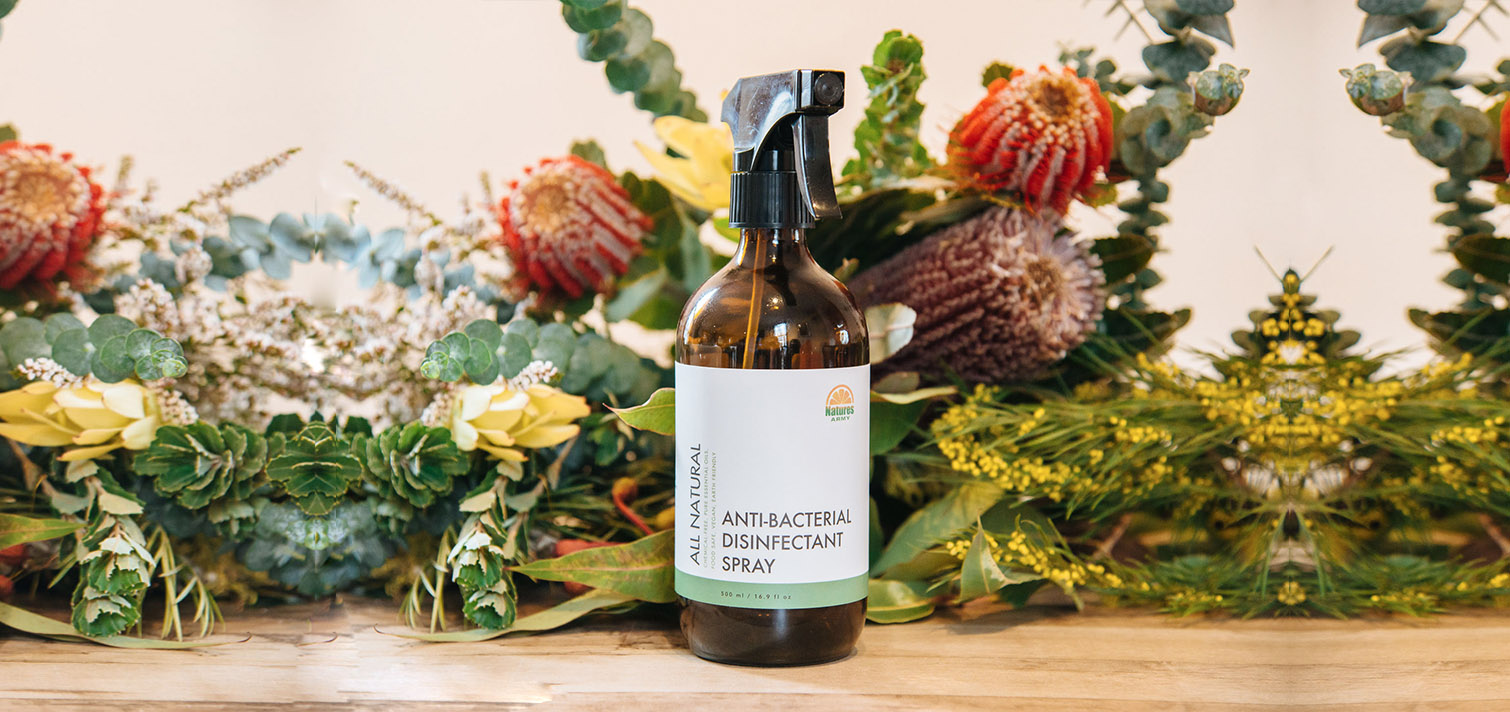
Natures Army Disinfectant Spray is handmade with love in Australia from safe, natural ingredients you can trust, by our own team of eco-cleaning professionals to protect your home, your family and our fragile planet. Our intoxicating disinfectant spray is derived from a blend of essential oils blessed with powerful, natural, anti-bacterial properties to keep your home safe, clean and fresh without the need for harsh toxic chemicals.
How to use:
Shake well before use. Excellent for cleaning and disinfecting most surfaces around the home, especially toilets, door handles, light switches, tiled areas in bathrooms, laundries and kitchens. Also suitable for bins, chopping boards, babies change tables, children’s areas, play mats (and their toys). Do not use on porous, lacquered or natural wood surfaces. Patch test before use.
Ingredients: distilled water, white vinegar, tea tree oil, eucalyptus oil
- Anti-bacterial
- Disinfectant
- Environmentally friendly
- Free from dangerous chemicals
- Non-toxic
- Not tested on animals
- Palm oil free
- Vegan
External use only
Store away from direct sunlight
Keep out of the reach of children
Refill • Reuse • Recycle









